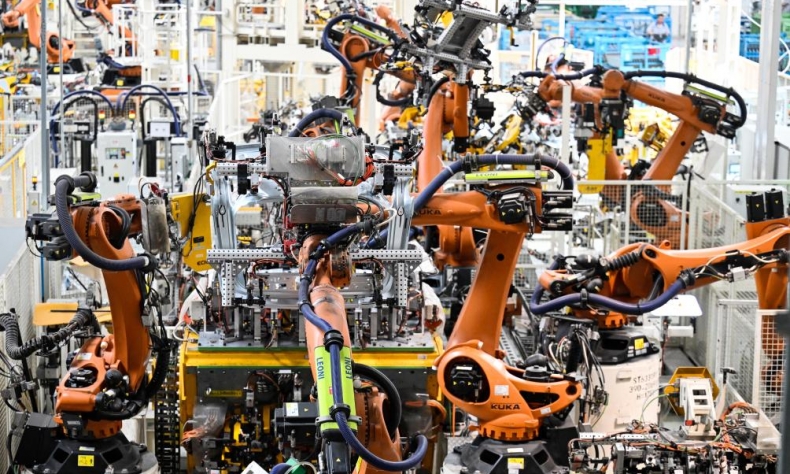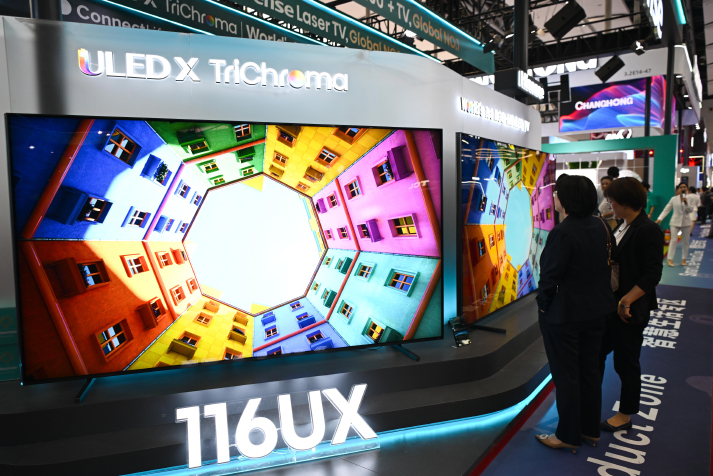A Vision That Transforms

Rather than fear what ‘Made in China’ represents, the world should recognize the potential for mutual benefit. A more capable, innovative China does not crowd out global progress—it enhances it.
When China launched the Made in China 2025 (MIC 2025) program 10 years ago, it stirred global interest, some with admiration, some skeptical and others critical. Yet now, as the initiative approaches its original milestone year, one thing is clear: MIC 2025 has profoundly reshaped China’s industrial landscape and generated ripple effects that extend far beyond its borders.
From low-end manufacturing to advanced industries, MIC 2025 has elevated China’s position in global value chains while supporting broader global goals, such as clean energy, supply chain resilience and technological inclusivity.
Upgrading China, empowering the world
For decades, China was known as the “world’s factory,” an industrial hub for low-cost, large-scale assembly. MIC 2025 marked a strategic pivot. The goal was not just more production, but smarter production, advancing capabilities in 10 priority sectors, including next-generation IT, robotics, aerospace, electric vehicles (EVs), green power, biomedicine and more.
The results have been transformative. In solar and wind energy, Chinese companies now lead in global output, drastically reducing costs and making renewable energy more accessible worldwide. In EVs, firms like BYD, NIO and CATL (Contemporary Amperex Technology Co. Ltd.) are pushing the envelope of battery innovation, affordability and performance—benefiting consumers from Southeast Asia to Europe.
These aren’t isolated gains. They reflect China’s deeper integration into global supply chains and its increasing role in driving solutions to shared challenges.
Global synergies and shared benefits
One of the least appreciated aspects of MIC 2025 is how it has fueled global collaboration. U.S. companies like Tesla and Apple have leveraged China’s manufacturing strength to scale innovation. European automakers rely on Chinese battery supply chains. And in climate action, China’s industrial capacity has helped slash prices for renewable energy production and EV batteries, aligning with international carbon reduction goals.
The International Energy Agency has noted that China’s role in scaling solar energy has made it the most affordable source of electricity in history. MIC 2025’s sustainability push, once seen as domestic policy, is now a global asset.
Tensions and misunderstandings
MIC 2025 has not been without friction. Concerns in some Western countries have focused on market access, subsidies and the perception of state favoritism. These concerns have triggered trade disputes and export restrictions, particularly around semiconductors.
But the concept of industrial policy is not unique to China. The U.S., Europe and Japan have long pursued similar goals through various programs. Whether it’s the U.S. CHIPS Act or Germany’s Industry 4.0 strategy, the underlying intent is the same: Secure national competitiveness in a changing global economy.

The key question is not whether China pursues industrial advancement, but whether countries can engage in healthy competition, grounded in mutual respect, clear rules and shared innovation.
From scale to innovation
A decade ago, critics argued that China focused too much on scaling existing technologies rather than developing its own. Today, that narrative is changing. China is now a leading filer of international patents, a major contributor to AI and 5G development, and a fast mover in quantum computing and advanced materials.
This evolution is not accidental. MIC 2025 provided both the strategic framework and government support to develop ecosystems that reward innovation, incubators, hi-tech zones, STEM (science, technology, engineering and mathematics) education and research funding.
Although the term “Made in China 2025” is now less visible in official discourse, its core objectives live on in newer frameworks like Digital China, Smart Manufacturing and Green Development. These shifts reflect both responsiveness to external criticism and China’s internal adaptation to evolving global trends.
Indeed, MIC 2025 was never a fixed endpoint, it was a starting line. It launched a process of continual upgrade, from manufacturing to services, from imitation to innovation and from isolated development to global integration.
The road ahead: engagement, not containment
As competition in areas like AI, semiconductors and biotech intensifies, the international community faces a choice: Treat China’s rise as a threat or see it as an opportunity for deeper collaboration. The first path breeds zero-sum outcomes. The second fosters shared solutions, including on climate, public health and inclusive growth.
Constructive engagement does not mean avoiding competition; it means building rules, institutions and partnerships that channel competition into progress.
MIC 2025 has done more than accelerate China’s industrial transformation. It has contributed to a global innovation ecosystem, lowered barriers to clean technology and empowered a new generation of problem-solvers. As 2025 progresses, the vision lives on—not as a slogan, but as a legacy and a platform for further collaboration.
Rather than fear what “Made in China” represents, the world should recognize the potential for mutual benefit. A more capable, innovative China does not crowd out global progress—it enhances it.
The next chapter of global development will be co-written by many hands. Let China’s experience be seen not just as a case of national advancement alone, but as a model of how technological transformation, when pursued with openness and responsibility, can serve all of humanity.
The author is president of the America China Public Affairs Institute and chairman of the Partnership for Peace and Prosperity.
 Facebook
Facebook
 Twitter
Twitter
 Linkedin
Linkedin
 Google +
Google +










